Triumph have heavily updated their Street Triple offerings in 2017, with the 765 R providing an exceptional nakedbike choice. Review & Images by Kris Hodgson, Jeff Ware
Hearing about and getting the opportunity test out the new Street Triple 765 platform has been one of the highlights of my year, keeping in mind I own a ’13 Triumph Daytona 675R and obviously have a soft spot for the British brand.
I was extremely worried about testing any of the 765s, because there was the possibility they might be significantly better than my Daytona and I’d naturally have to upgrade…
The Street Triple has always been a huge success, and if you’ve ever ridden one you’ll know why. It was a combination of many things, but the sheer ridability and fun factor always stood out, even when compared to bikes that could offer more in specific areas.
For 2017 I feel Triumph have kept true to this theme, it is a drastically updated bike but it still feels like a Street Triple, even with the adoption of Ride-by-Wire (RbW). Why do I mention this? Well the original Street Triples had exceptional fueling and recapturing that character and quality with a RbW system was always going to be a challenge.
First up though, styling has been updated with more flowing and less angular bodywork, a revised and much improved headlight design, mini-dash cowl, elegant single-piece upper side fairings, new front guard, and of course a more attractive exhaust. The exhaust features a sportier muffler, but less integrated collector, but to me at least it was an improvement.
Big news was the full electronics package, with the Street Triple gaining riding modes, traction control and on the R and RS models a TFT display and accompanying switchblock joystick control for accessing the various settings.
Perhaps bigger news was the move to a 765cc engine capacity, with the three models variants (S, R, RS) offering three different power outputs to further differentiate the models. Add to this the fact that the MotoGP Moto2 category will soon be powered by a Triumph 765cc powerplant and it’s an exciting time for the brand.
For a quick run down, the S boasts 83kW at 11,250rpm, the R a boosted 87kW at 12,000rpm and the RS 90kW at 11,700rpm, with the R and RS putting out 77Nm of torque (at 9400rpm and 10,800rpm respectively) compared to the S’s 73Nm at 9100rpm.
The R and RS both receive a slipper clutch, with the exclusion on the S a bit of a strange one, with different levels of Showa suspension between the three models, and the RS featuring an Ohlins STX40 rear shock. The R and RS also feature Brembo front brakes (M4s on the R, M50s on the RS) compared to the S’s Nissin offerings, while Diablo Rosso Corsa’s on the S and R are replaced by Diablo Supercorsa SPs on the RS.
The Street Triple S also has a lower 810mm seat height, and features Road and Rain mods, the R features four modes Road, Rain, Sport and a rider programmable extra, while the RS is the same as the R, and adds a further ‘Track’ mode to the options and includes a quickshifter as standard.

Triumph ensured with the S, R and RS there was significant differences between each to justify the different costs and appeal to different riders.
This probably sounds complicated and perhaps even unnecessary, but for some background, when Triumph released the updated Daytona 675 and Daytona R in 2013 they made a fatal error. The R featured Ohlins suspension front and rear, better Brembo brakes, carbon fibre trim, and a quickshifter as standard. Just the quickshifter and the carbon-fibre was arguably worth the price difference between the standard and R models, and that meant the regular models ended up being discounted to try and move them. The standard bike was awesome, but the R was just too good a deal for the small price difference.
With the Street Triple 765 they seem to have put more thought into ensuring this doesn’t happen with more separation between models. Purely as a consumer I’d have liked to see the slipper clutch standard across all models, and the quickshifter standard on the R, but the quickshifter at least is an easy addition. Auto cancelling indicators are also a nice touch and while I’ve never personally thought they are a necessity, they can be turned off, and the indicator switch on the switchblock offers enough feel to tell when you’ve toggled the indicators on, unlike some of the new systems. Without that feedback it’s easy to fudge toggling the indicators.
It’s certainly an attractive package on paper, so what about on the road…

The new Street Triple R carries on much of the character of the previous model, although the RbW controlled powerplant has evolved.
2017 Triumph Street Tripe 765 R – The Ride
The Street Triple 765 R is the middle offering of the new range, as you’ll notice from the points above and features an 825mm seat height, 25mm higher than the outgoing model. Jumping on board I feel instantly at home, keeping in mind I own a Daytona with an 830mm seat height.
I can get both feet flat to the ground, reach to the ‘bars is natural, and moving off and getting my feet onto the ‘pegs leaves the bike feeling compact, light and not at all cramped. I’m lucky that I just fit the Daytona, and the same is true of the new 765 R. At about the 180cm mark and on the long legged side the 765 R offers an upright seating position, as you’d expect for a nakedbike, and feels like a smaller capacity machine, retaining much of the Street Triple’s agile feeling.
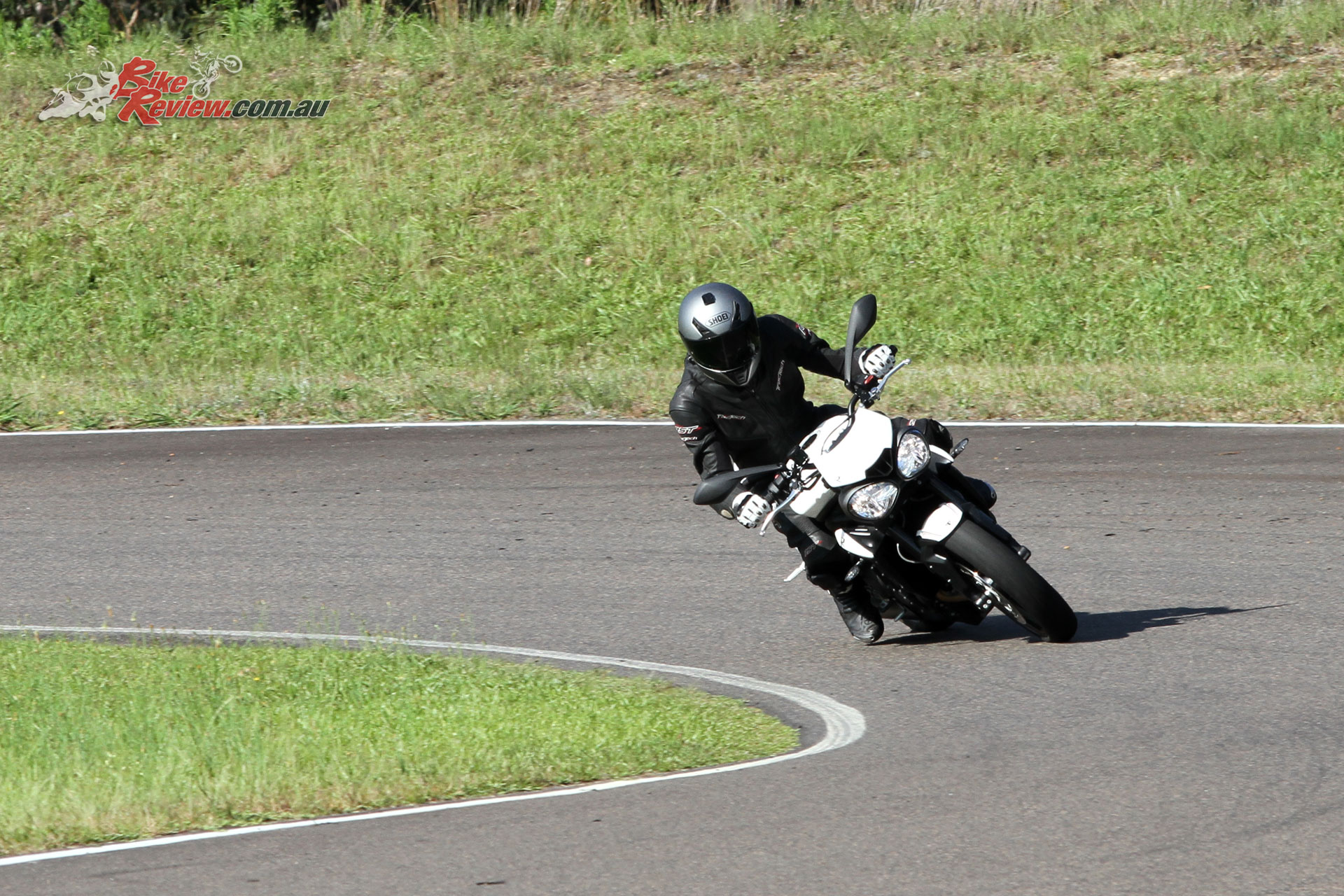
The Street Triple handles effortlessly, going where you look and making line corrections and direction changes a breeze.
Letting the clutch out I get a familiar crunching sensation, something criticised by Daytona owners online with the cause much debated but which I’ve lived with for 30,000km without any further issues. The 765’s gearbox is smooth, with positive shifts, if a very late friction point for the clutch, which can make feathering the clutch somewhat annoying.
Fueling is responsive and smooth and the change to lower first and second gear ratios feels a little unwarranted for first gear particularly. I’m upshifting extremely early into second gear, which feels more comfortable and still offers great acceleration.
Part of this is no doubt the fact that power delivery is more direct and just feels taught and instantaneous – a feeling that is recognisable from some of the competition’s RbW triple-cylinder offerings, with Triumph managing to apply their trademark smoothness.
The Triumph triple whistle is still there, and the bike is relatively quiet, no doubt thanks to Euro4, while still exhibiting a similar sound track to the 675. The similarities are there, but the overall power delivery is more torquey and exceptionally controllable.
The slipper clutch and engine braking are ideally tuned for a road bike, and rolling off the throttle to wash off speed is an effective way of cutting through the twisties incredibly smoothly. Trying out both Road and Sport modes also showed some slightly different characteristics, with sharper throttle response in Sport, however I found the two largely interchangeable, with a wet mode offered to help in treacherous conditions.
In fact the only time the 765 R didn’t feel exceptionally smooth was rolling off the throttle at times from around 4000rpm and below, where the interaction between fueling, slipper and engine braking could create deceleration, that was less linear than the rest of the rev range, in first and second gears.
The up-spec Showa suspension on the 765 R also does an exceptional job, on standard settings it felt a little soft around town over speedbumps and similar – at first, however I quickly realised it was exceptionally well balanced at offering good comfort for general riding around the suburbs and on the highway, and exceptional performance through the twisties. Without touching an adjuster it was pretty much perfect for my riding style through the twisties and on our proving ground, where any inadequacies are quickly revealed, as the suspension hunkered down through the softer stroke.
The Street Triple has always had an exceptional chassis, and with the new gull wing swingarm this continues, with the bike offering almost effortless, telepathic handling. Where some correction was required (to make up for my poor choice of line or technique) the 765 R was quick to oblige to the slightest of inputs.
I’d say it’s an overall improvement comparing the current 765 R to the old 675 R (Street Triple) as having tested that several years ago on the same proving ground I remember more effort being required and not quite the same level of manners from the suspension, despite still being exceptional. Just keep in mind I’m a regular road rider, and no track day guru setting PBs each lap.
Even on the road, through narrower lower speed sections where I was contending with traffic and poor road conditions the 765 R offered the feedback and handling that left me with utter confidence in the bike, meaning I could barrel through, concentrating on keeping an eye out for cagers focused on their mobile phones.
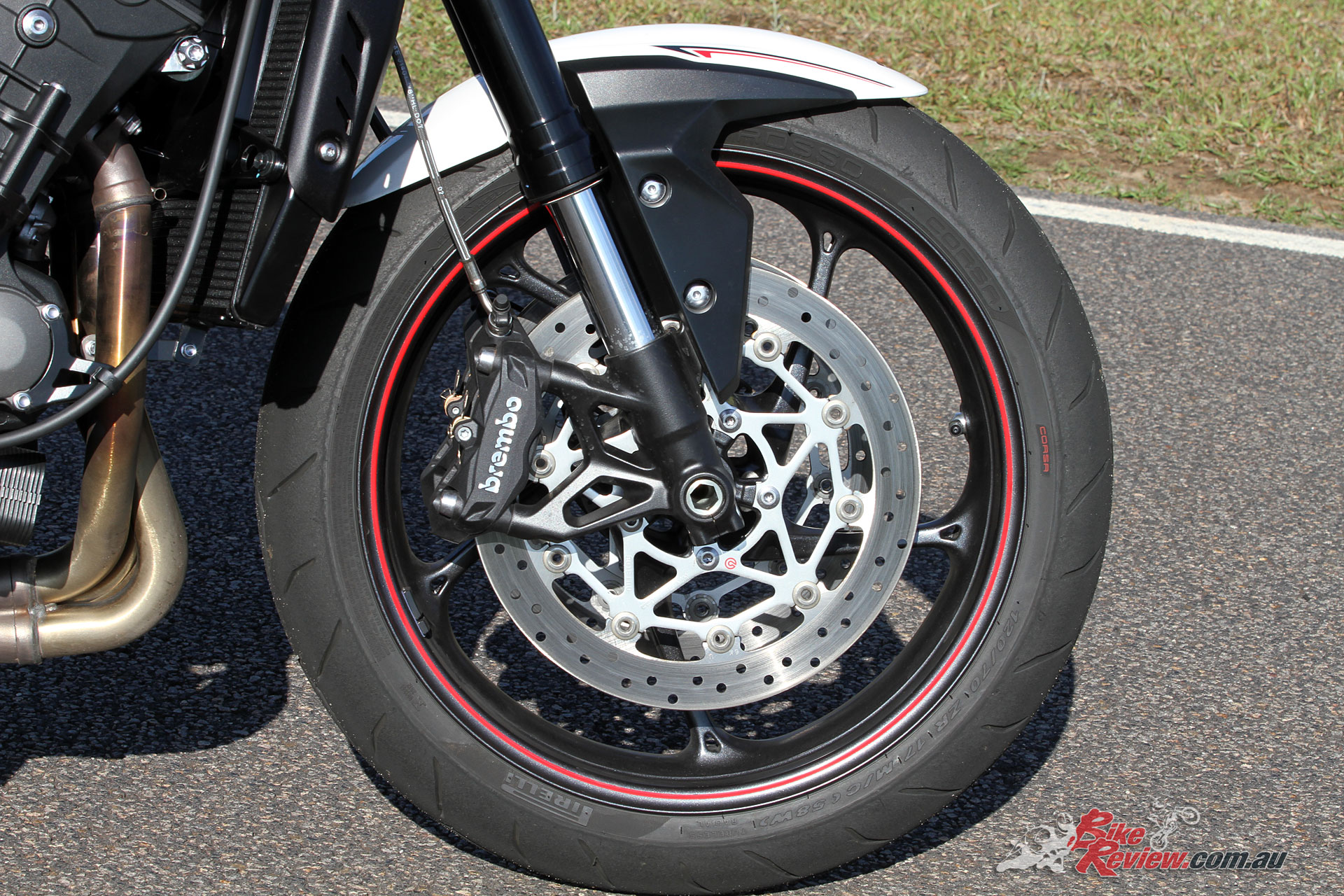
Front brakes on the Street Triple R should offer exceptional performance, but in this case were in need of bleeding.
Where this 765 R did not impress was with the front brakes, with probably two-thirds of the front lever pull taking place before any actual braking occurred. Considering the Brembo hardware fitted (and taking into account the condition of the rubber on the bike when it arrived) it would seem someone cooked the brakes and they were in need of a good bleed.
The brake power was there – eventually, but modulation and control certainly wasn’t for the front brakes. It’s the kind of brake feel you get when your brakes are overdue for new fluid. The rear brakes do the job as you’d expect and feature a Brembo caliper, while both ends are backed up by ABS. I spent most of my time on the 765 R minimising front brake use as a result.
So where does the Street Triple R stand overall? I think compared to the older 675s it is probably a victim of its own success, with exceptional fueling and torque delivered so effortlessly that in comparison the bike is lacking some small amount of that original character. Obviously some riders will prefer that ultra-polished performance, and I think with an aftermarket exhaust and quickshifter it’ll regain that feeling.
In saying that, it’s not really a criticism, as an owner you wouldn’t be disappointed and it’s still an obvious upgrade over the previous machine. The suspension is no doubt better, the brakes better, the rider aides exceptional, the TFT display and styling great touches. It’s still an iconic Street Triple, and it still carries that same flavor and an amazing chassis, and offers such a fun and easy to ride option. It’s the ideal all-round nakedbike.

There’s little that hasn’t been significantly upgraded over the outgoing Street Triple R, with an exceptional chassis and ergonomics.
Would I upgrade my 2013 Daytona 675 R for a Street Triple 765 R or RS? Well no, but the Daytona R was a significant upgrade from the 675 Street Triple R (STR), so for someone making the move from 675 STR to 765 STR it’ll be a very different situation. Now if those rumours of a Daytona 765 turn out to be true…
If you haven’t tried a Street Triple in the past there’s no better time to get on board. For our Tech Talk on the latest Street Triple 765s see: Video Review: 2017 Triumph Street Triple 765 R.
Second Opinion – 2017 Triumph Street Triple R 765
The Triumph Street Triple has been a fave nakedbike of mine since I first rode one back at the Australian media launch in 2007 or 2008. It was a proper hoons bike, with the thrilling triple character of the bigger Speed Triple, without the hefty weight. More than just a smaller version of the Speed, the Street was an all-out fun bike that to this day remains one of the most engaging motorcycles of the past decade. The heart of the matter has always been that howling 675cc triple, that is rough around the edges and likes a busy throttle and gearbox for maximum grin.
When I heard about the 765 I immediately hoped that Triumph engineered that same engaging fun factor into the engine and didn’t totally refine it out in a Honda kind of way… I was eager to ride the bike as I liked the styling and the on-paper spec’s.
My quick ride recently was enough to test this out and to get a feel for the new bike. A short 45-minute road ride through town and some country roads was followed by an hour on a proving ground doing performance tests. The Street Triple proved to be a good thing but although I came away satisfied, I wasn’t beaming or buzzing like I used to on the Street Triple 675 R, which always made me feel like a law breaking hoon!
The new engine, with a larger bore and stroke and over 80 changes, feels like what it is – a bigger cc 675. It now pulls from lower, with more torque and a more linear delivery of power, while retaining a strong top end. It’s impressive and seems to have endless pull in any gear.
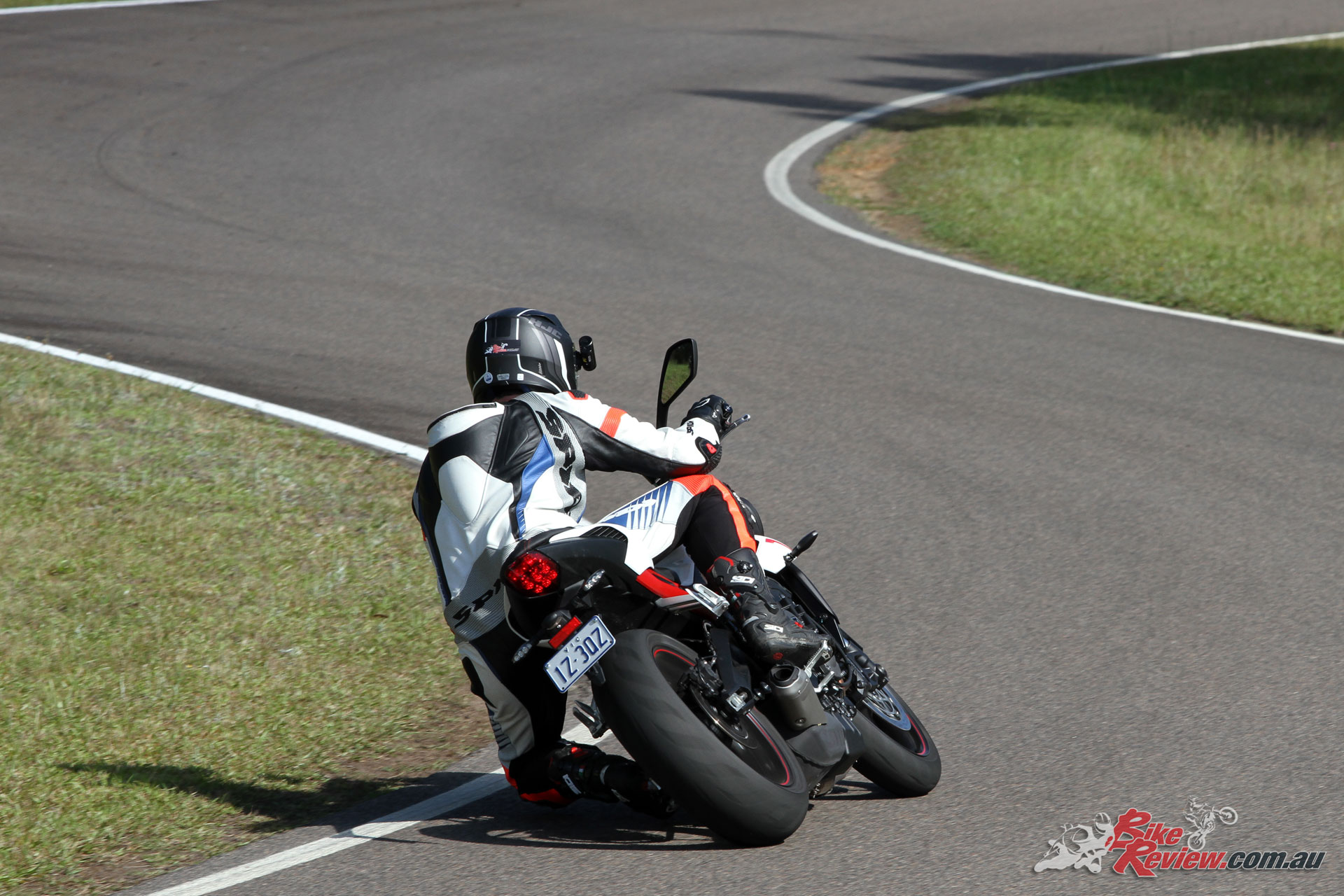
The new Street Triple feels like a larger 675 and is more sensible on the road, but didn’t have quite the same thrill at the Proving Ground.
It does rev slower than the old engine, taking longer to gain revs, so has lost some of that revvy supersport thrill and that raspy slightly rough around the edges feel of the 675, which I found quite an exciting characteristic of the smaller motor. So although he new engine has the grunt, particularly well on the road, it wasn’t as fun for me on the proving ground. Much more sensible though and would no doubt produce better lap times if that was your thing.
Fuelling is vastly improved, the gearbox is good but a quickshifter as standard would be welcome on the R.
Chassis-wise, the new 765 feels slightly bigger than the outgoing model to me but I can’t explain that. It also feels heavier, particularly on change of direction, despite a claimed lighter weight. Possibly the crank is heavier, or the engine, either way it is still incredibly flickable and not at all tiring to ride. It’d be an awesome racebike!
The soft suspension is very comfy and compliant on the road yet also offers the support needed for sportier riding, something Triumph have always been good at getting right, and I made no changes during the performance tests. I was surprised how well it handled with the soft suspension, proving how good the geometry is. Setting it up for track use would make it even better but for ride days, you can leave it alone… Even the Pirelli Rosso IIs are good for laps.
I tried Road and Sport modes during performance testing and preferred the softer throttle on the Road and not surprisingly the Sport mode on the proving ground.
Unfortunately as fantastic as I know the brake package is, braking was an issue on our press bike as the lever was coming close to the grip after just a few laps. On the road the lever needed pumping and the brakes had clearly copped a flogging before we got the bike and were also squeeling loudly. The tyres were also blue having been through multiple heat cycles. Poor preparation by Triumph Motorcycles Australia I’m afraid… JW.
2017 Triumph Street Triple R Specifications
Claimed Power: 116bhp(87kW)@12,000rpm
Claimed Torque: 77Nm@9400rpm
Engine: Liquid-cooled, 12 valve, DOHC, in-line 3-cylinder, 765cc, 78 x 53.4mm bore x stroke, 12.65:1 compression ratio, Multipoint sequential electronic fuel injection with SAI, Electronic throttle control (RbW), stainless steel three-into-one exhaust system low single sided stainless steel silencer, Rider Modes, Traction Control
Clutch: Wet, multi-plate, slip and assist clutch
Gearbox: Six-speed
Final Drive: O-ring chain
Dry Weight: 166kg
Fuel Tank Capacity: 17.4 litres
Frame – Black powder coated aluminium beam twin spar frame, two-piece high pressure die cast sub-frame, twin-sided cast aluminium alloy swingarm
Suspension: Showa 41mm USD separate function big piston forks (SF-BPF), 115mm front wheel travel, adjustable compression damping, rebound damping and preload, Showa piggyback reservoir monoshock, 131mm rear wheel travel. adjustable spring preload (lock-rings), compression damping and rebound damping.
Brakes: Switchable ABS, Twin 310mm front floating discs, Brembo M4.32 four-piston radial monobloc calipers, single 220mm rear fixed disc, Brembo single piston sliding caliper
Wheels & Tyres: Cast wheels, 3.50 x 17in, 5.50 x 17in, 120/70 ZR17, 180/55 ZR17 Pirelli Diablo Rosso Corsa
DIMENSIONS
Seat Height: 825mm
Height (Without Mirrors): 1085mm
Rake: 23.9 degrees
Trail: 100mm
Length:2065 mm
Wheelbase: 1410 mm
Instruments: 5” full-colour TFT instrument pack
Additional features: LED/DRL headlights, switch cubes with 5-way joystick control, self-cancelling indicators, coloured matched flyscreen, premium seat stitching and vinyls, red rear subframe, wheel pinstripes
2017 Triumph Street Triple R Gallery
The Verdict | Review: 2017 Triumph Street Triple 765 R
Trick-Triple
The new 765cc triple-cylinder Street Triple R is better than ever, with a full RbW throttle and electronics package, with revised styling, more torque, more power and more performance than ever before, while retaining the Street Triples trademark rideability and fun.


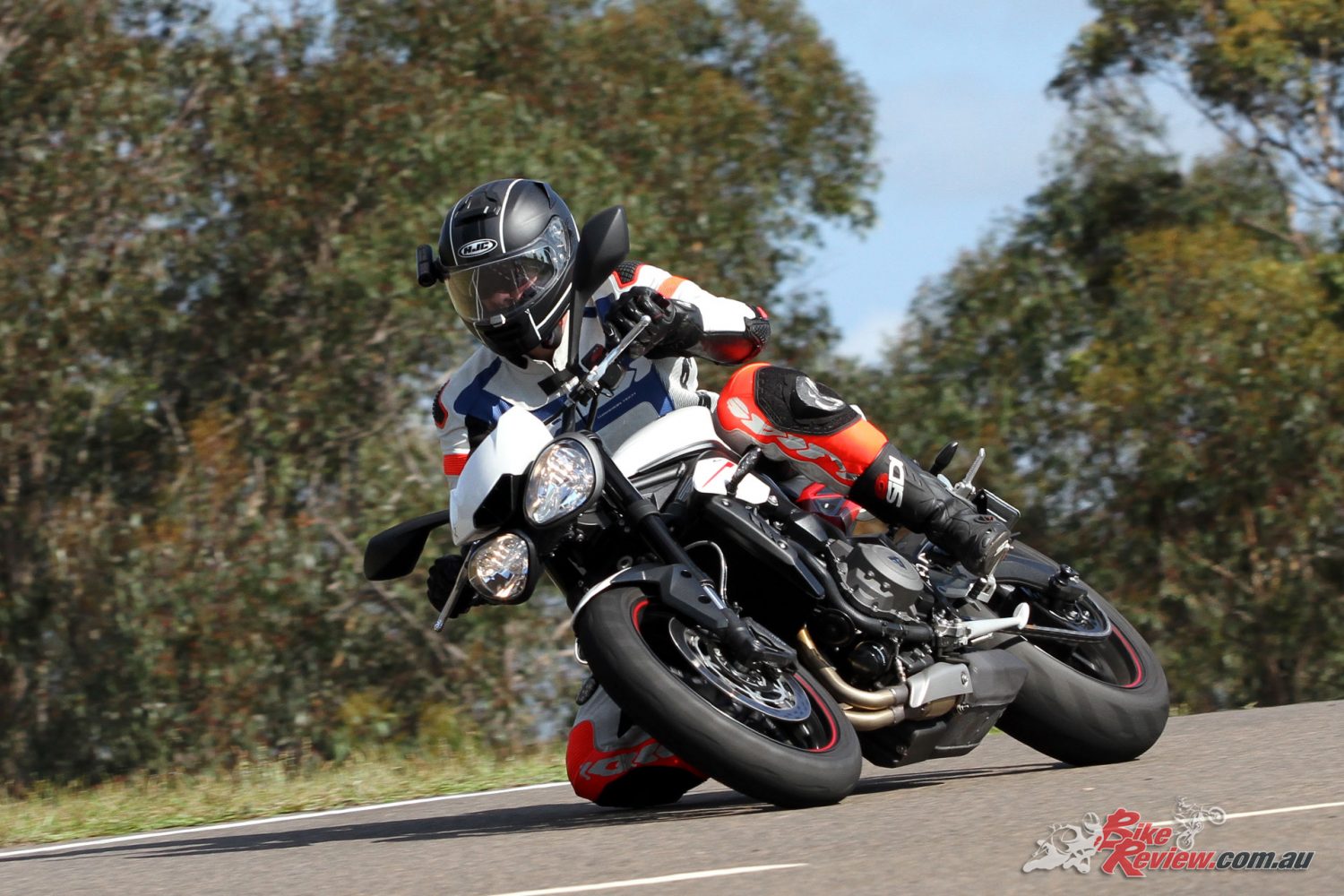
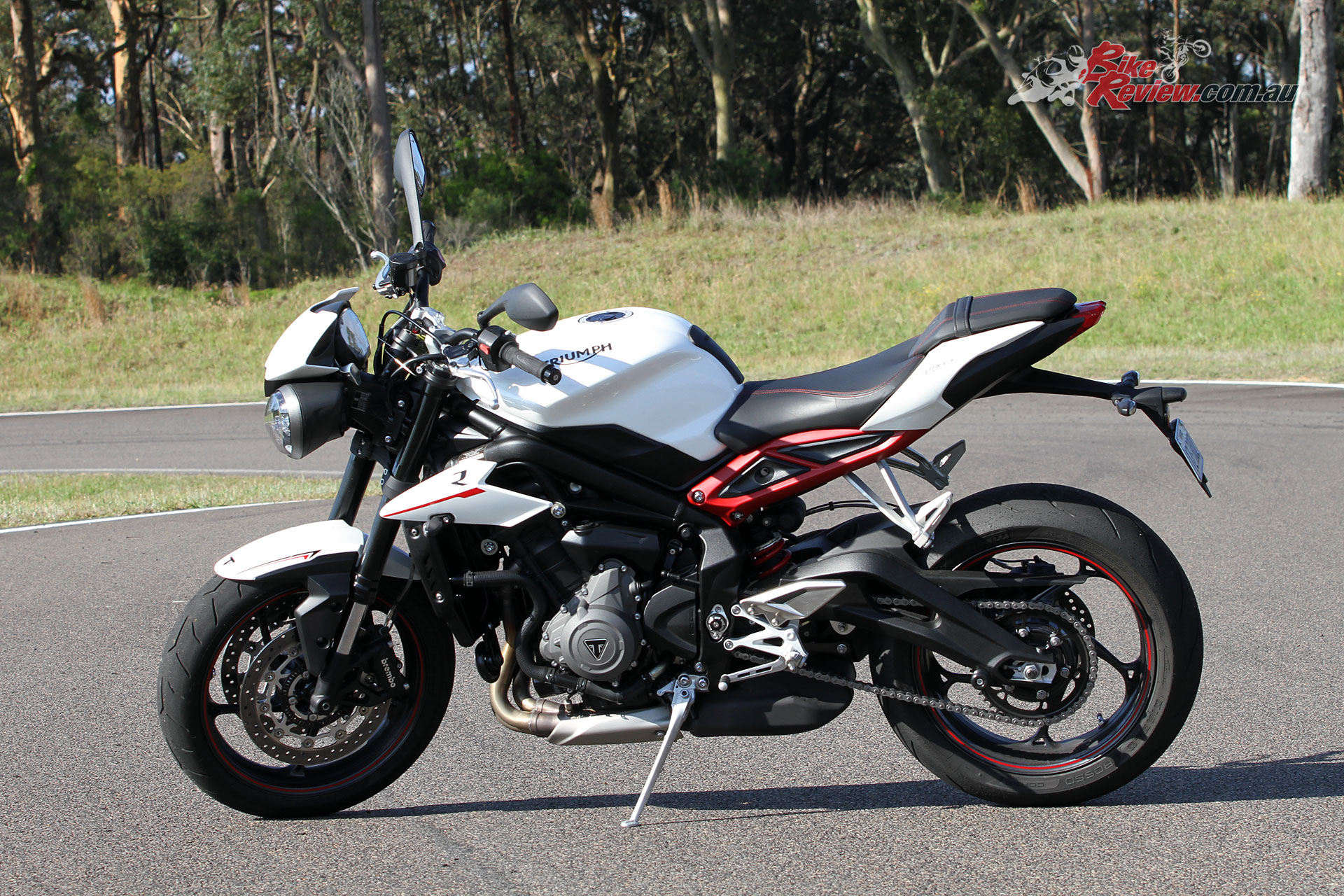

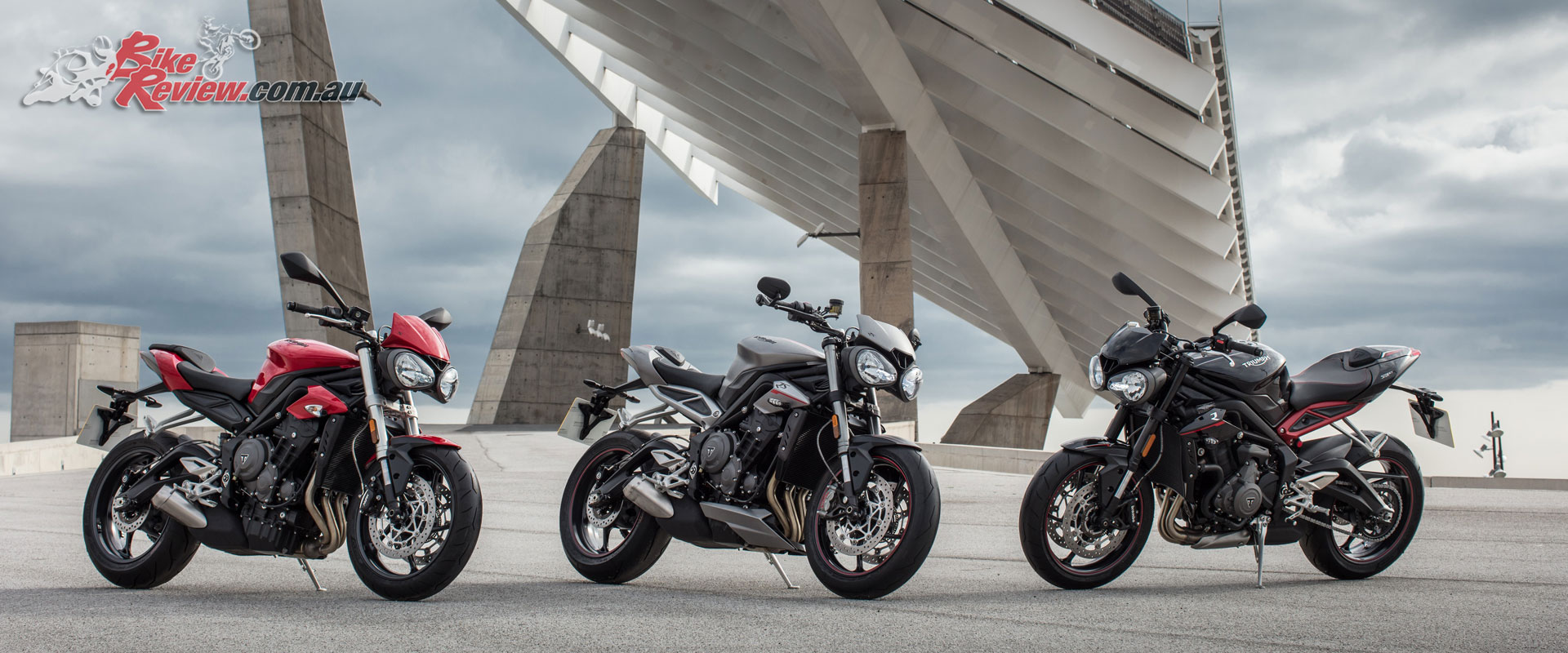

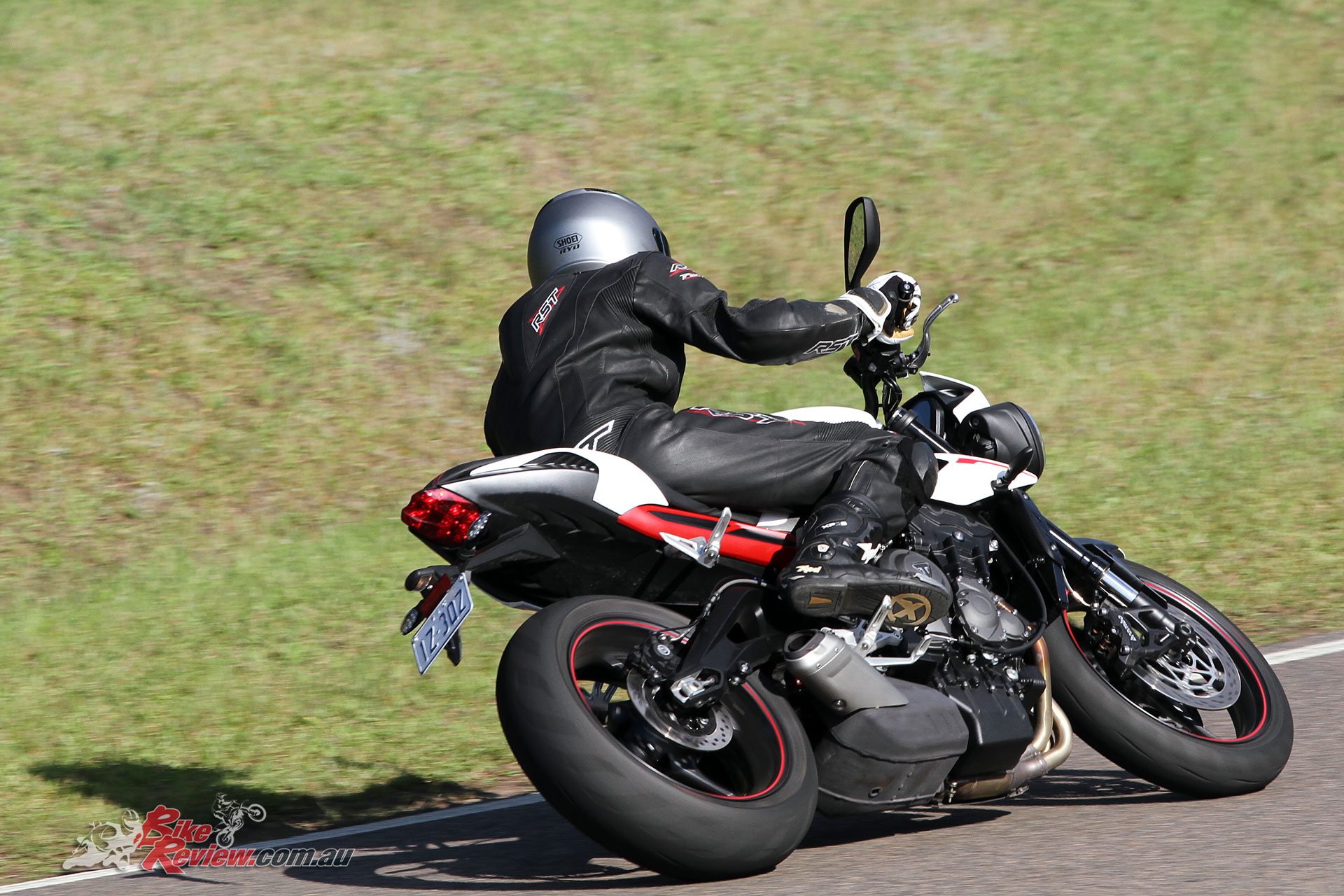

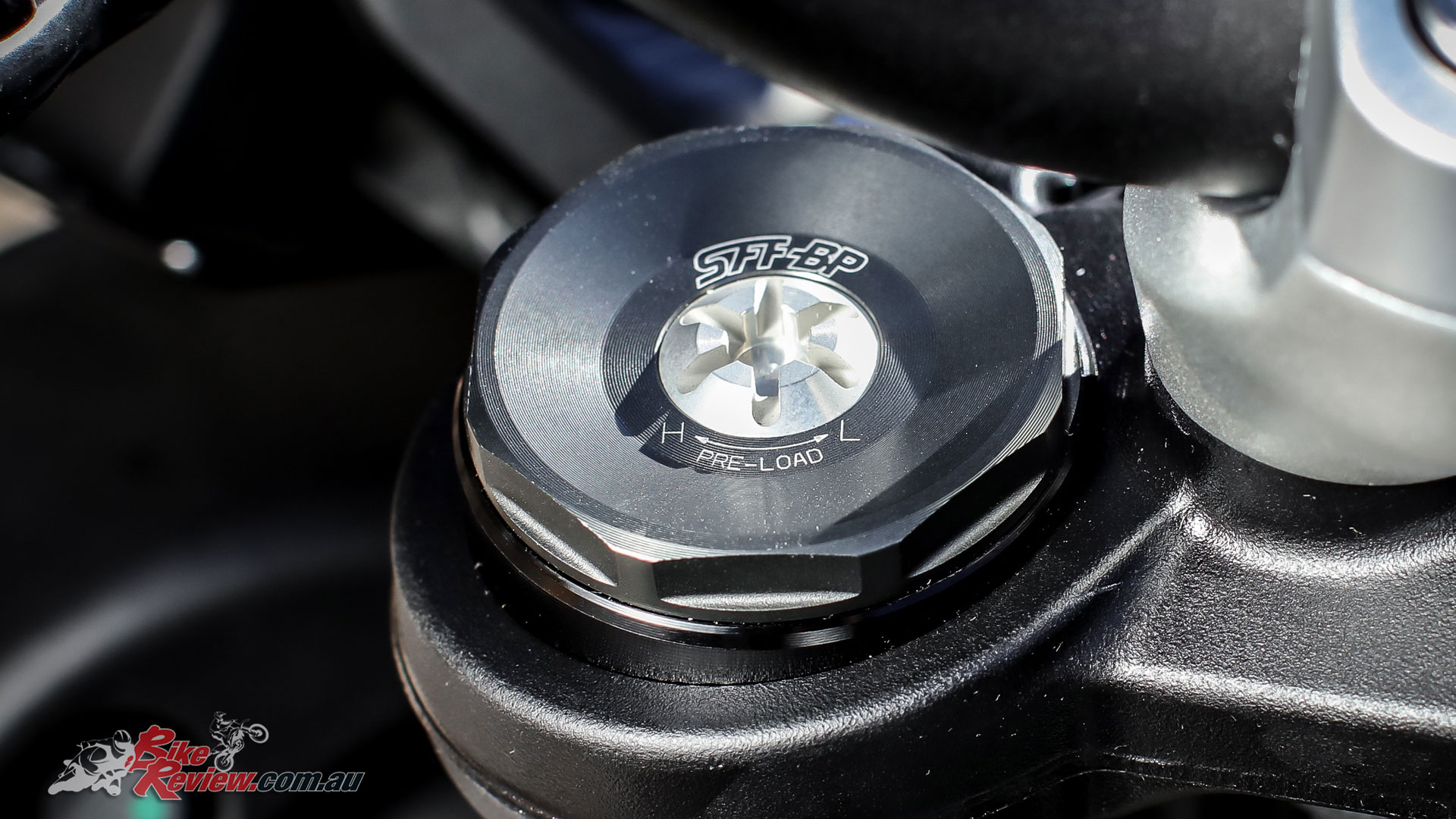
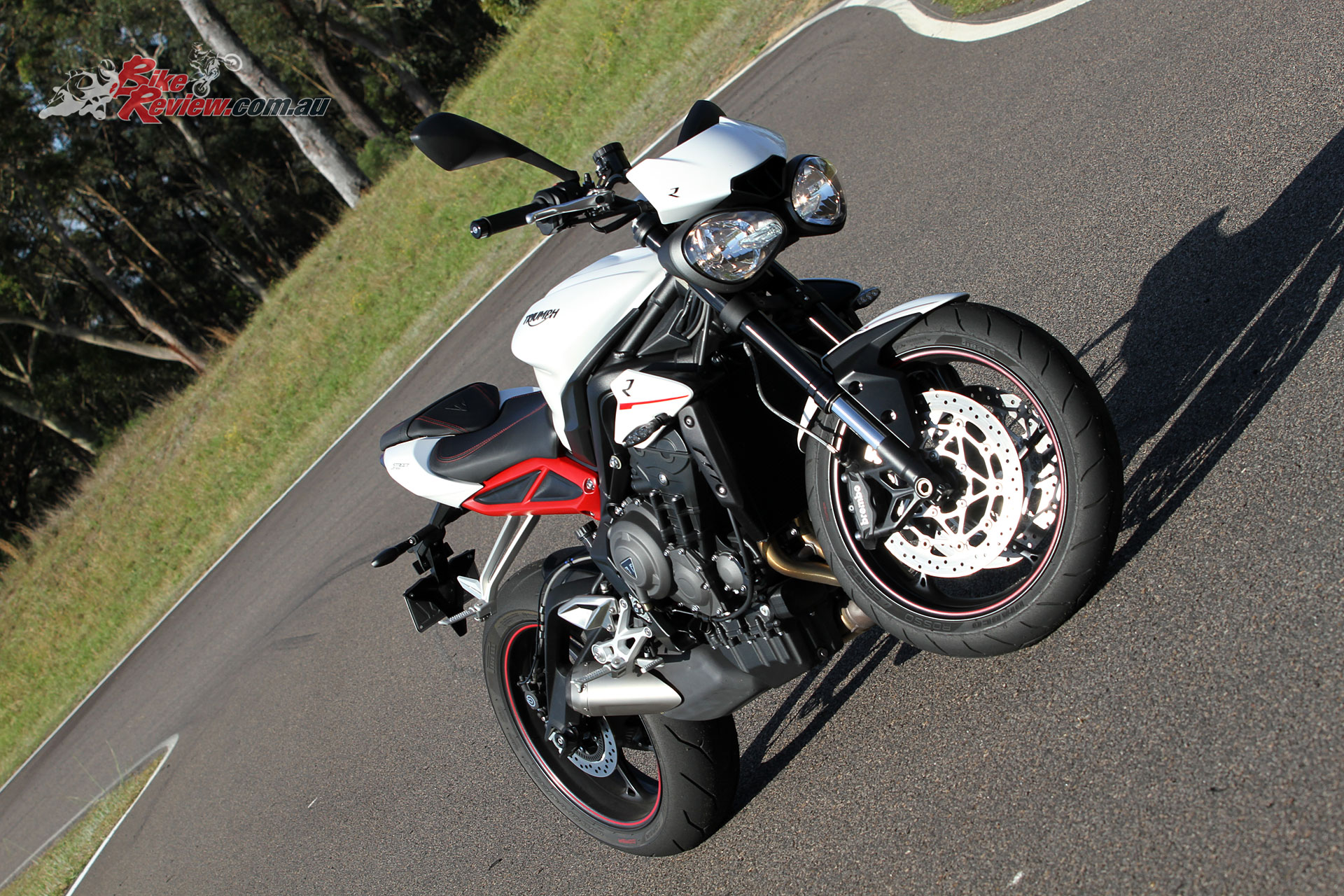

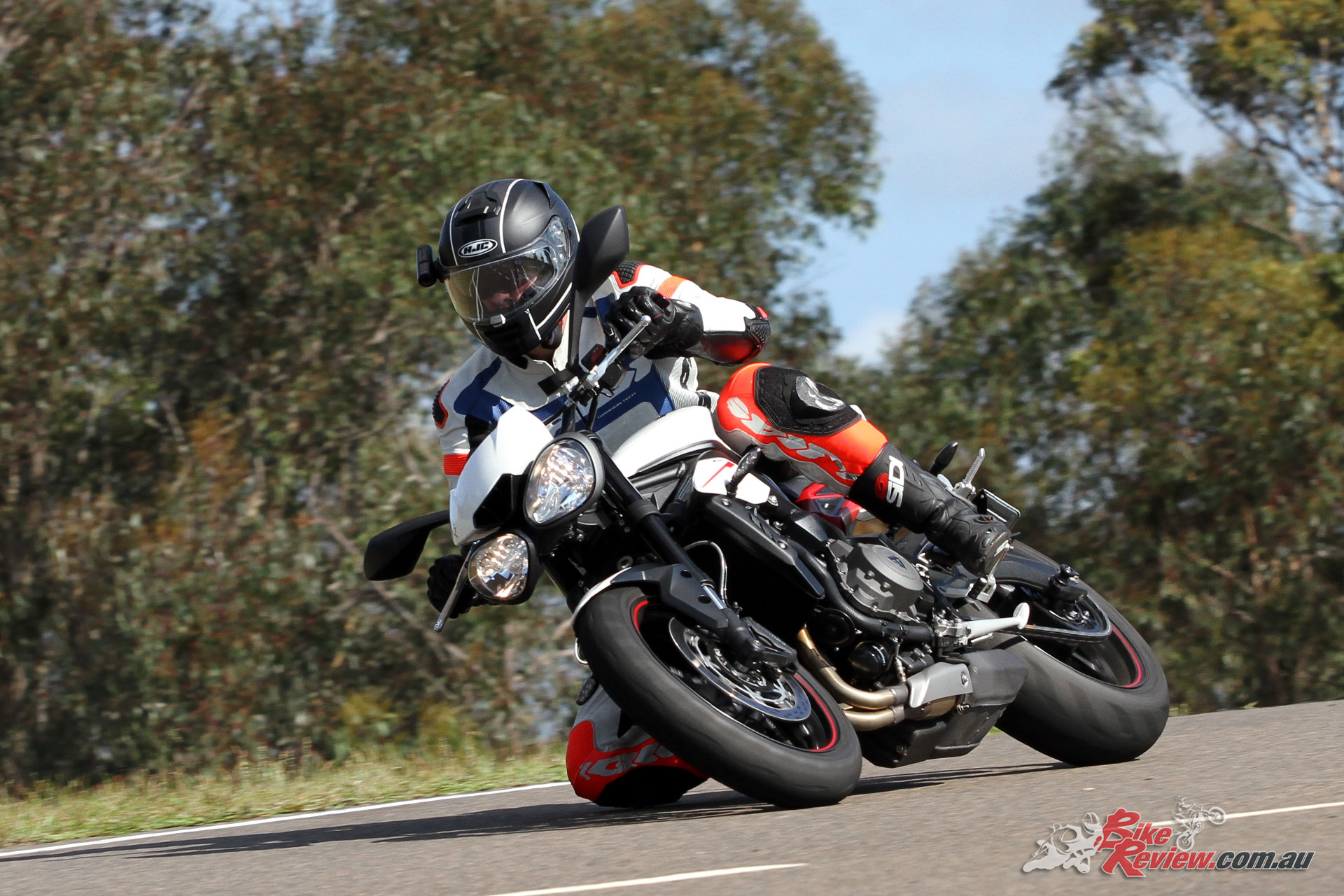



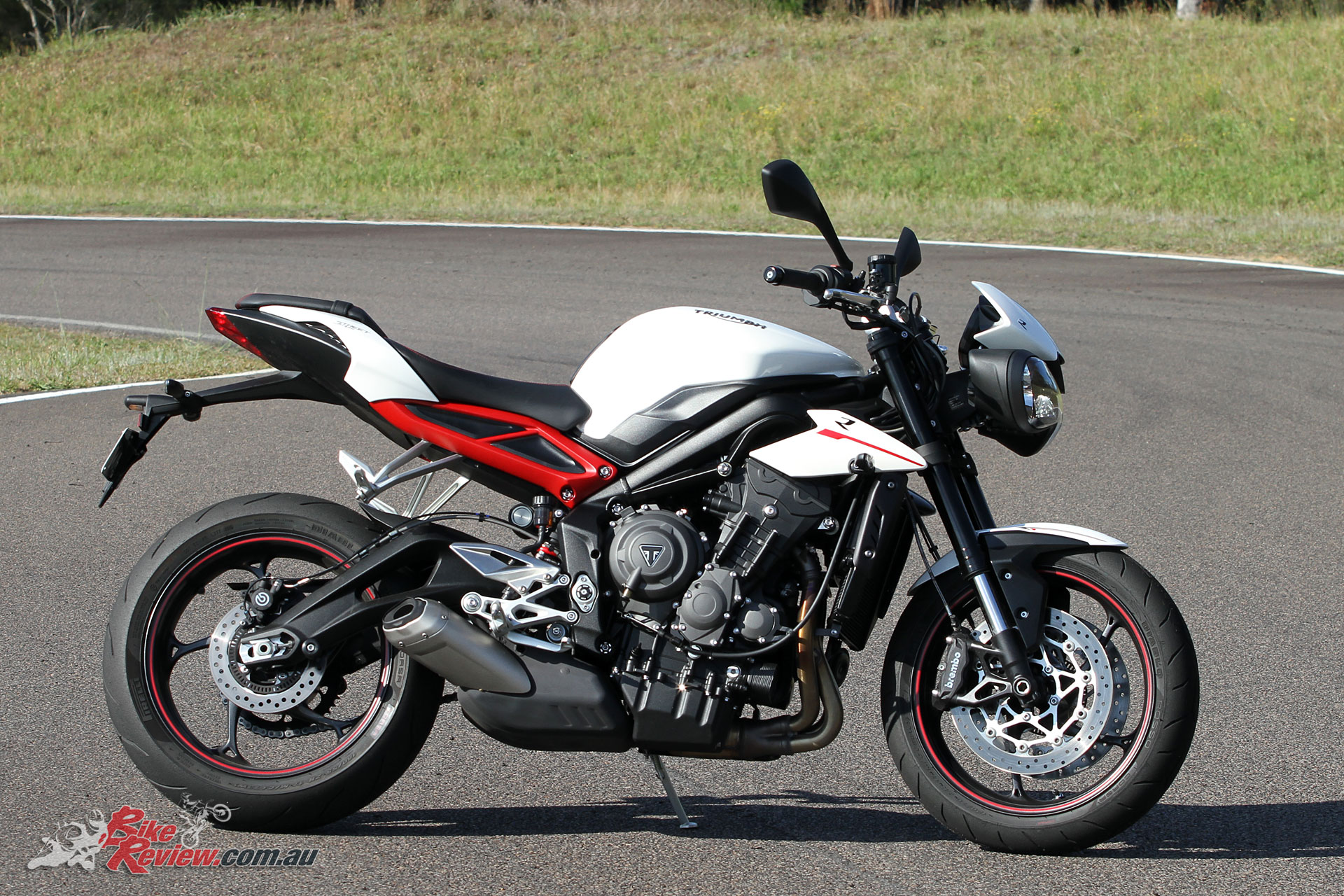



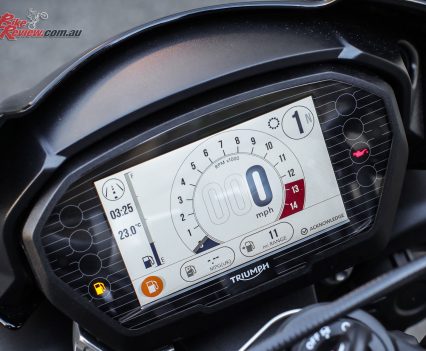


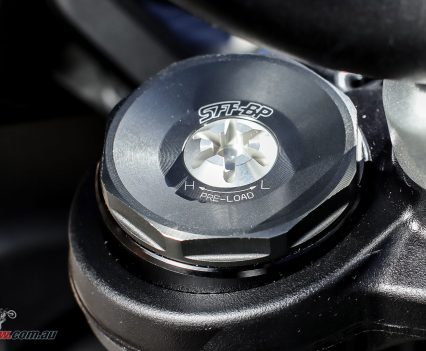


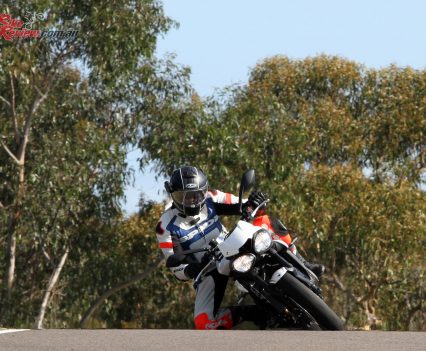
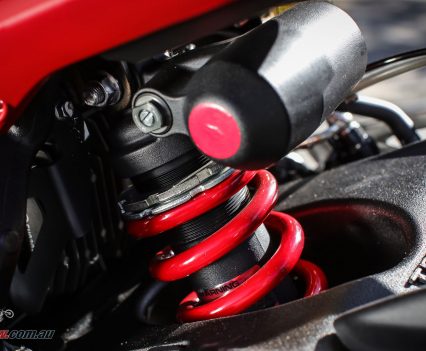
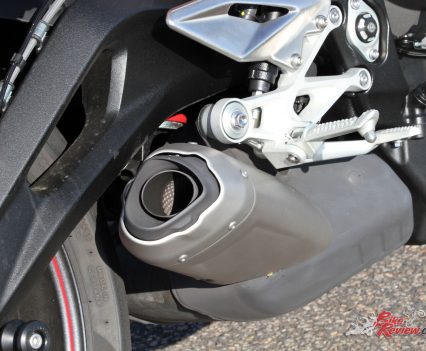



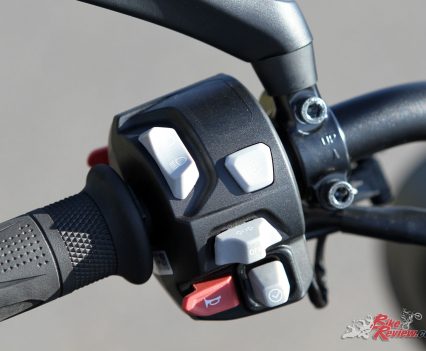
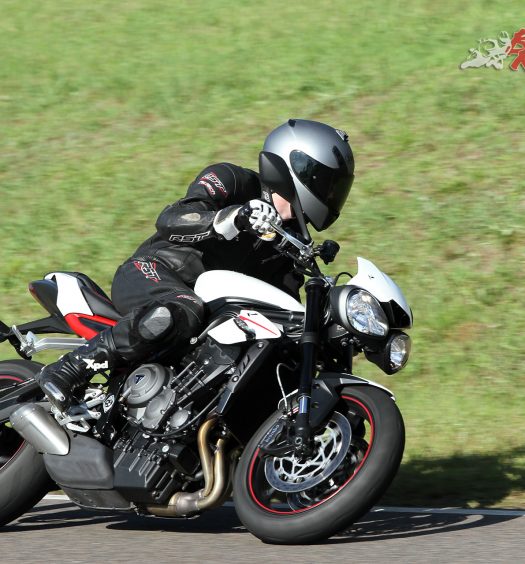


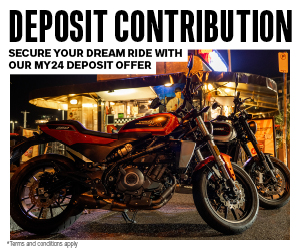
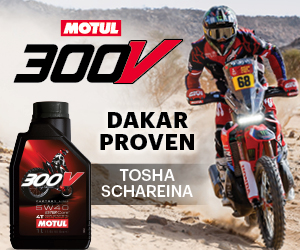
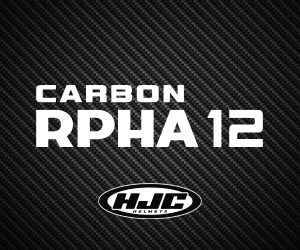









July 27, 2018
I could not agree more. I bought mine brand new and also had the issue with the brakes + felt the crunch in the clutch. All minor issues, I’d say, considering how well the bike handles and pulls. I have been enjoying the ride!